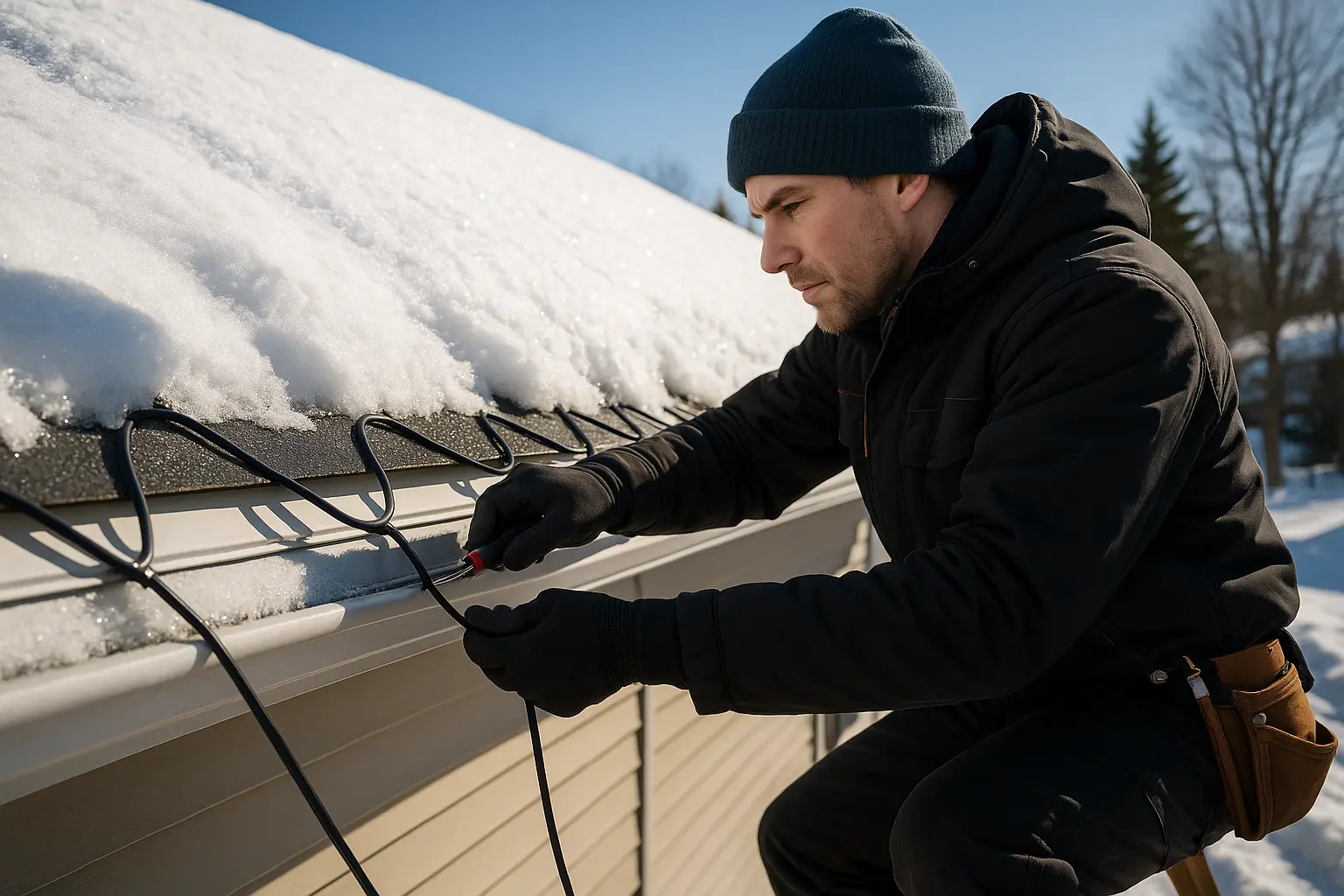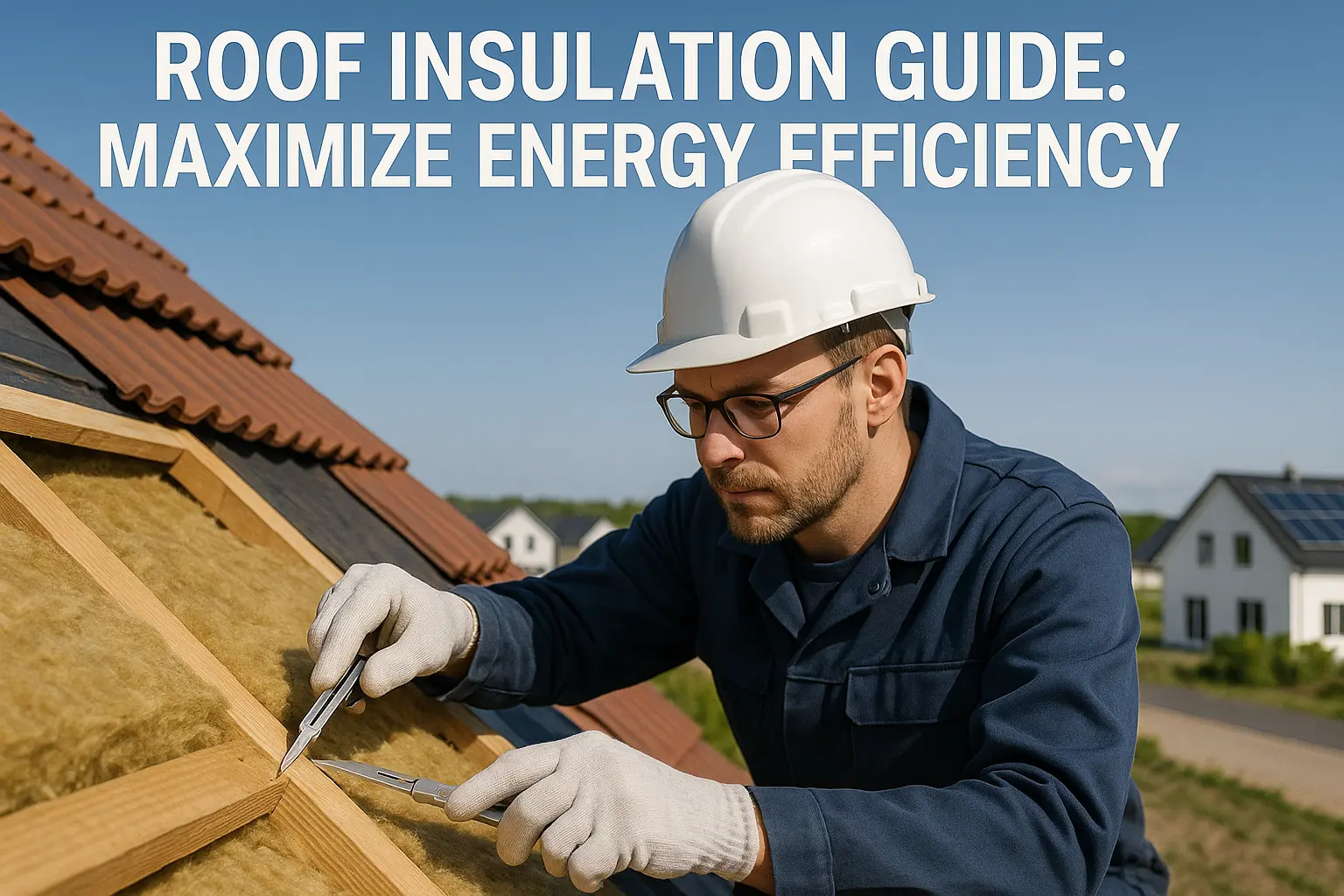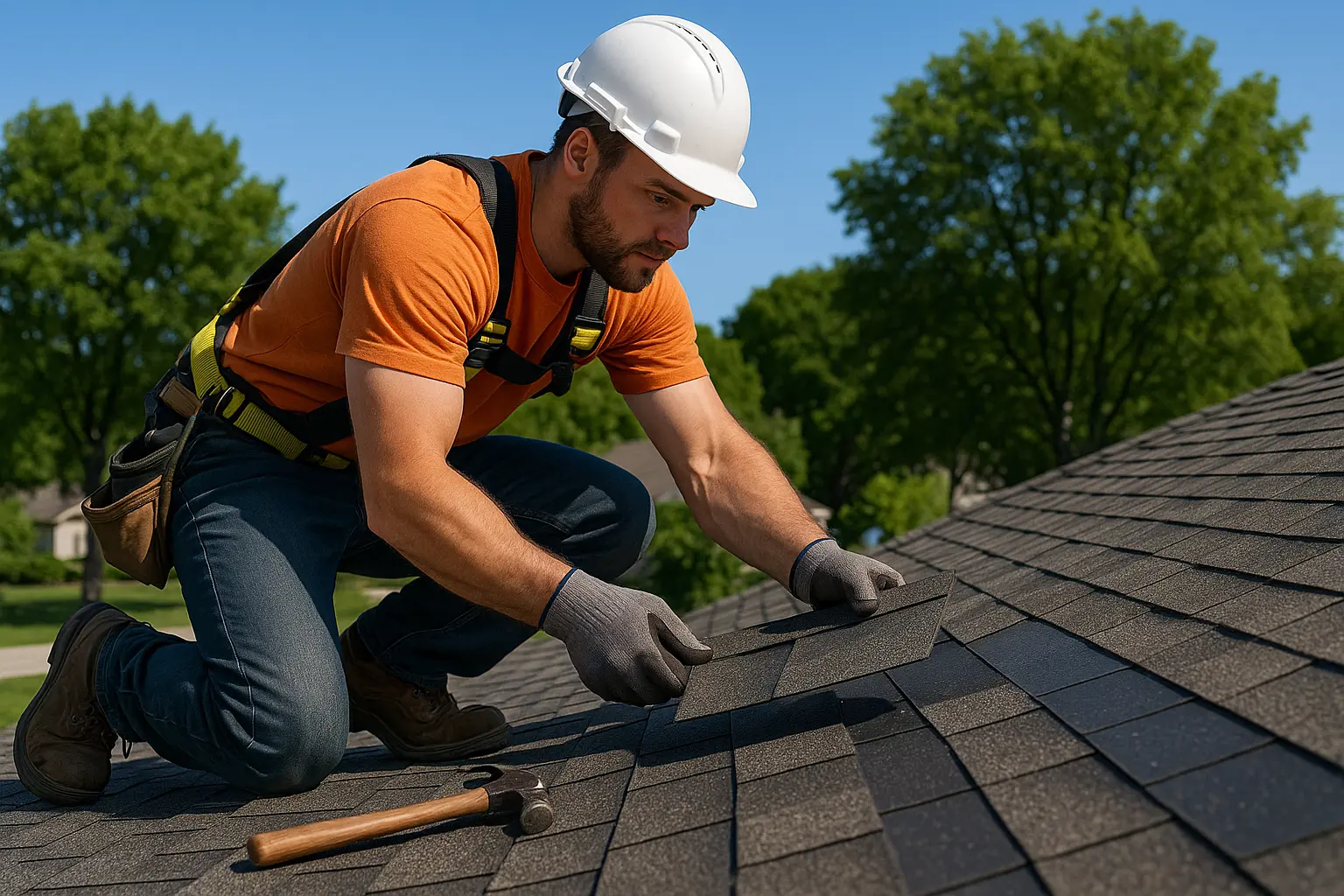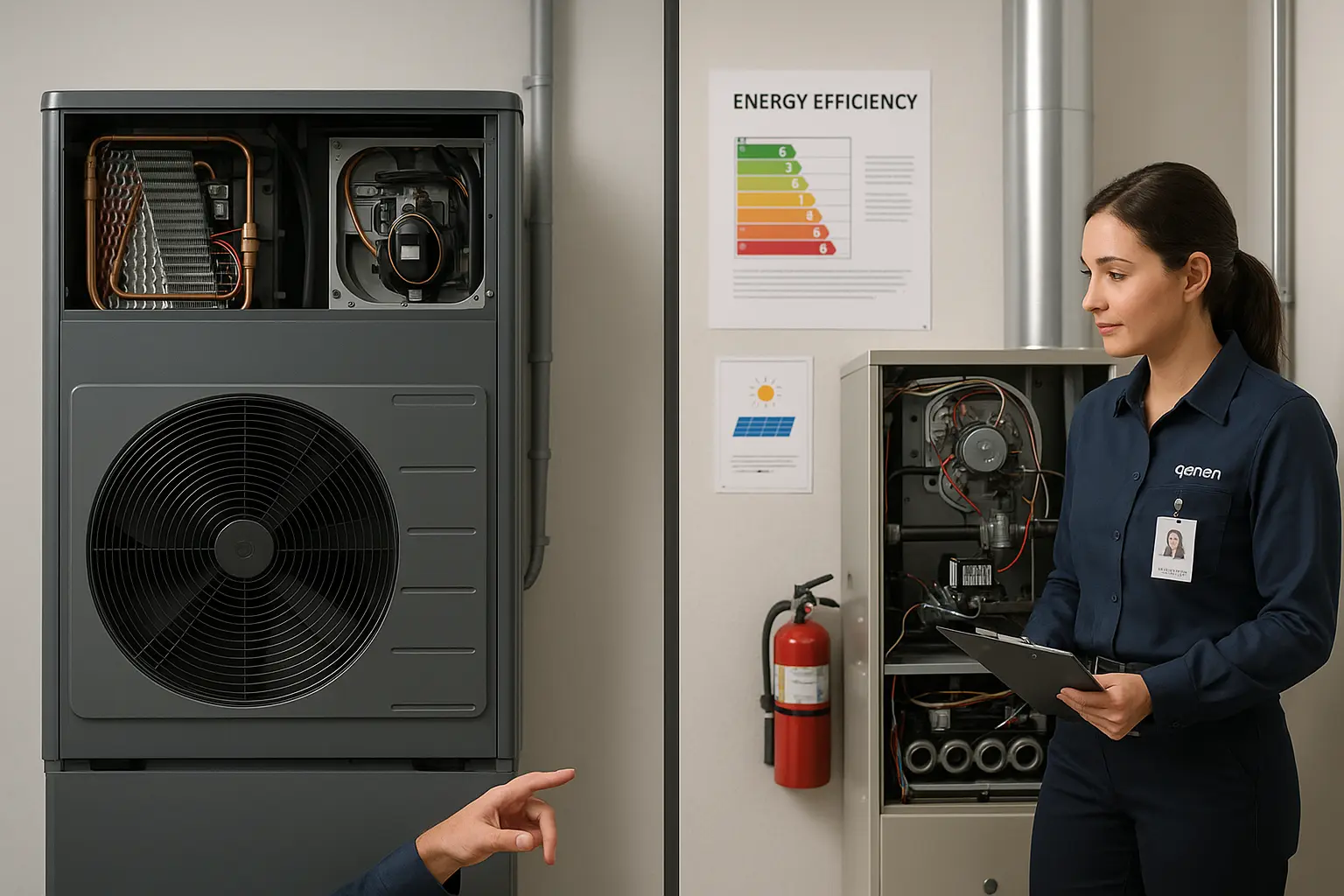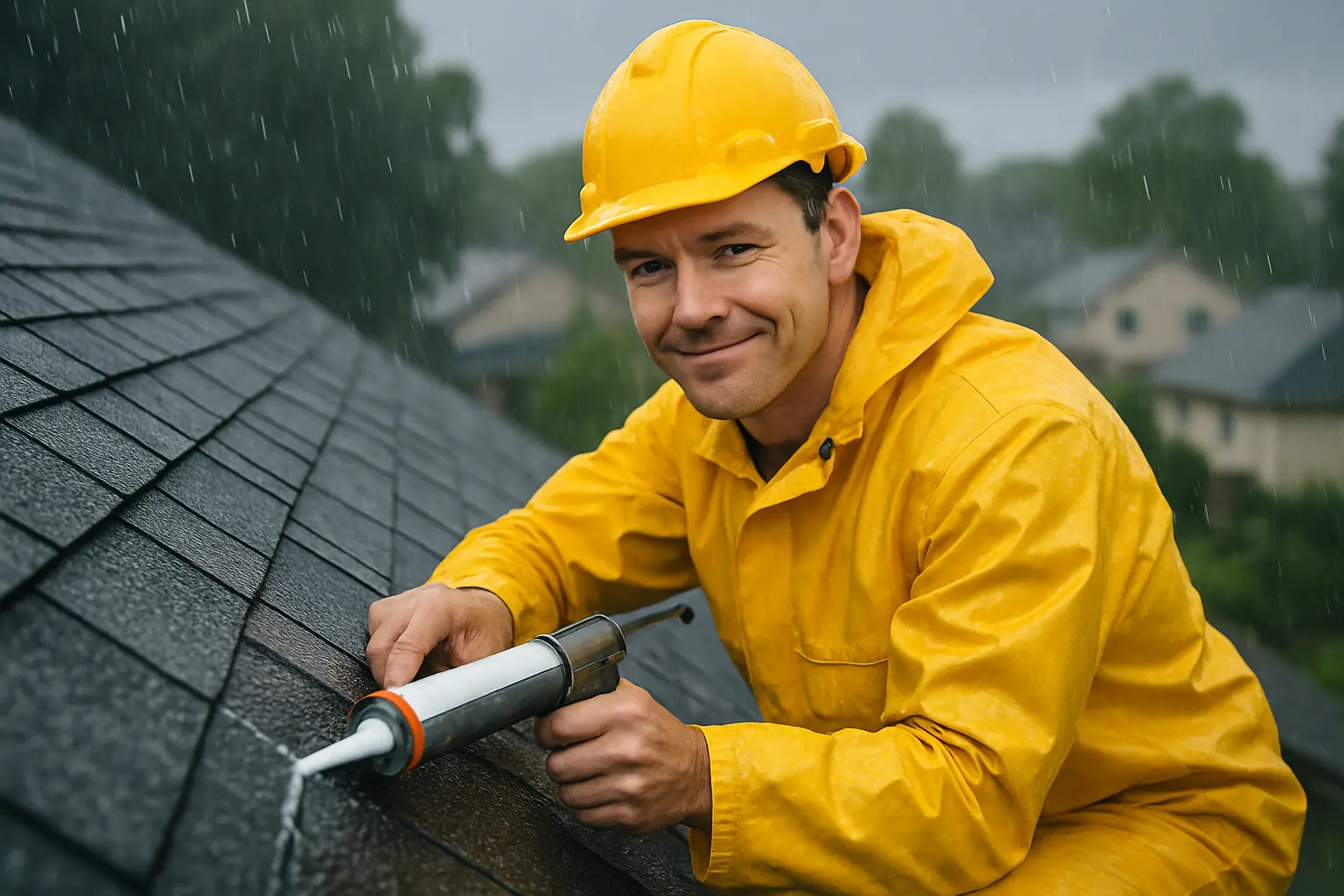Introduction: insulation, heat cables, ventilation
Winter’s charm comes alive with glistening snowscapes and quiet nights that invite a sense of calm and reflection. Yet beneath the beauty, homeowners often face the challenge of ice buildup on roofs—a problem that can lead to serious roof damage, leaks, and escalating repair bills. Recognizing early signs and acting swiftly to stop ice formation can save you from heavy expenses and keep your home safe and dry all season long. In this guide, we explore practical steps and important measures that help ward off the problems caused by winter’s harsh touch.
Every homeowner should learn why ice forms on roofs and how to tackle it effectively. In the sections ahead, we break down the causes behind ice dams, explore how proper roof ventilation and insulation play vital roles, and list proven methods to keep your roof in top shape during winter. Whether you face heavy snowfall or just want to prep for unexpected cold snaps, these insights will arm you with the techniques needed to defend your home well into winter.
Understanding Ice Dams and Their Threat
What Triggers Ice Dam Formation: insulation, heat cables, ventilation
Ice dams occur when the heat from inside your house escapes through the roof and melts the snow piled above. The melted water runs down until it meets the colder edge of the roof, where it instantly freezes. This cycle creates a thick barrier of ice along the roof’s edge. Over time, continued melting pushes more water, which can seep under shingles and weaken the structure, eventually leading to leaks and other damages.
Picture a winter day when the sun briefly thaws the snow on your roof. As night falls and temperatures drop sharply, the water at the eaves quickly turns to ice. Repeated cycles of melting and refreezing form a solid ring of ice, and the danger lies in the trapped water. When enough water gathers behind the ice barrier, seepage may start under the shingles, setting the stage for water damage, mold growth, and a drain on your insulation efforts.
The quality of your roofing materials is another key player in this scenario. Roofs that are older or lack proper waterproofing are more prone to issues from ice dams. Architectural elements such as valleys, dormers, or skylights can also disrupt the natural flow of water off the roof. A solid grasp of these dynamics helps you choose the right measures—like improved roof ventilation and modern materials—to guard against winter’s onslaught.
Key Elements in Winter Roof Safety
How insulation, heat cables, ventilation Can Make a Difference
Simple adjustments such as optimizing insulation, heat cables, ventilation can be the difference between a roof that weathers the winter with ease and one that struggles against ice dams. A well-ventilated roof sustains a uniform and cold temperature across all the surface, which prevents the warm interior air from hastening snow melt on the roof. Homeowners who invest in insulation, heat cables, ventilation often notice fewer problems with ice buildup roof issues.
Imagine your attic acting as a quiet channel for air movement. With proper insulation, the heat inside your home remains contained, stopping it from reaching the roof’s snow layer. When combined with heat cables that gently warm critical areas and effective ventilation that maintains a steady cold temperature, your roof gains a robust defense against the harsh cycles of winter. This trio—insulation, heat cables, ventilation—is key to controlling ice dam growth while helping to prevent ice buildup roof complications.
Several real-world experiences show that when homeowners implement a mix of these three techniques, they experience a notable drop in ice dam occurrences. In homes equipped with extra insulation and strategically placed heat cables, the number of leaks and water damage events decreases significantly. Enhancing the airflow with proper ventilation ensures that no section of the roof receives extra warmth, keeping meltwater at bay and preserving your roof’s integrity.
Regular checks are also a smart idea. Homeowners who continuously monitor roof conditions and address minor issues before they escalate can see long-term benefits. Maintaining clear roof lines and proper insulation, along with timely repair of air leaks, are essential to keeping those dangerous ice formations in check. In short, combining insulation, heat cables, ventilation creates a robust system to help prevent ice buildup roof problems.
Practical Measures for Winter Roof Defense
Maintaining Your Roof Year-Round
Regular care of your roof is the cornerstone of winter protection. Removing excessive snow with a roof rake can dramatically cut down on the amount of meltwater that may eventually freeze into a dam. It is wise to clear your roof gently, making sure not to harm shingles or any delicate roofing parts while you work.
Many homeowners adopt a winter schedule that includes frequent inspections and timely snow removal. Alongside manual cleaning, hiring roofing professionals for periodic evaluations can help catch any early signs of ice dam formation. With proper care, small issues can be addressed before they grow into bigger problems, saving both time and money in the long run.
A simple routine check—combined with proper cleaning and maintenance—can go a long way in preventing ice buildup roof hazards. Regular attention not only improves your roof’s longevity but also ensures your home remains a safe environment during the frosty months. Maintaining a steady regimen ensures that your roof stays prepared for any burst of winter activity.
Using Heat Cables Wisely
One very practical solution to ice dams is the installation of heat cables. These devices are laid along the roof edges and critical spots, creating gentle warmth to nudge melted water off into a free flow. When installed correctly, heat cables can be the guardian your roof needs to keep ice from building up dangerously.
Strategic installation is vital. Following the manufacturer’s guidelines—preferably with professional help—ensures that insulation, heat cables, ventilation work effectively together. Initially, the cost may seem higher, but when you consider the expensive repairs ice dams cause, the benefits become clear. With the right setup, the hot-cable process helps prevent ice buildup roof issues while saving you future headaches.
Many homeowners have experienced a significant reduction in roof leaks after installing heat cables. With their help, ice no longer forms a dam that traps water and triggers leaks. This preventive measure, when combined with proper insulation and roof ventilation, creates a dependable shield against winter’s rigors.
Enhancing Roof Drainage and Structural Care
Gutter and Airflow Solutions
Keeping your gutters in working order plays a vital role in a winter maintenance plan. Clean, clear gutters help the water from melted snow flow smoothly off your roof. When gutters freeze over or collect debris, water can back up, adding extra weight and leading to potential damage. Regular cleaning, combined with measures like installation of gutter guards, can keep the system running well even during heavy snows.
In places with very cold climates, some homeowners add heating strips to their gutters to keep the waters moving. Such practices ensure that any meltwater does not get stuck, thus reducing the risk of water pooling and eventually freezing into ice buildup roof hazards. Each method contributes to a balanced approach that protects your home from winter’s worst effects.
Air leak sealing in the attic is another often overlooked yet vital task. Closing up gaps around intercepts like vents, wiring, or light fixtures can stop warm air from seeping out. Repairing these leaks helps maintain a cold roof base—all while boosting your home’s energy efficiency. When freely escaping warm air is plugged, insulation, heat cables, ventilation can work together without having to battle localized hot spots.
Working on both gutters and sealing unneeded attic leaks creates a comprehensive winter strategy. Over time, homeowners see that reducing minor leaks and obstructions leads to fewer issues with ice buildup roof problems. Each careful adjustment adds to a broader defense line, ensuring that your roof remains safe and strong.
Additional Methods to Tackle Ice Dams
Snow Guards and Roof Upgrades
Snow guards are a useful addition when you live in areas with heavy snowfall. Mounted to the roof, they hold snow in place so it slides off gradually rather than all at once. By controlling how snow collects and melts, snow guards help ease the load on your roof and prevent sudden water surges that can trigger ice dams.
Introducing snow guards into your winter maintenance routine can be the difference between a roof that endures and one that suffers from repeated ice issues. When merged with good insulation, heat cables, ventilation, these devices help ensure that meltwater is distributed evenly, giving your roof a steadier, safer discharge of water. Their performance has been observed in homes where fewer water collection problems are reported, showcasing their practical benefits.
While many fixes work well to stop ice dams, sometimes the best long-term course is to consider a roof replacement. Modern roofs are built to withstand extreme winter conditions, with improvements in waterproofing, insulation, and design that encourage better drainage. A roof replacement, though a major decision, not only guards against ice buildup roof issues but also boosts your home’s overall resilience against weather extremes.
Consulting with a roofing professional is key when you suspect your current roof may need updating. They can offer tailored advice, taking into account the unique style of your home and the local climate challenges. Investing in a modern roof can pay off in both safety and increased home value over time.
Conclusion
Preventing the buildup of ice on your roof during winter isn’t just about maintaining appearance—it is essential for protecting your home’s framework and avoiding high repair costs. With a clearer understanding of what triggers ice dams and the benefits of regular maintenance, homeowners can take action using proven techniques. Whether your strategy centers around proper roof ventilation, sealing air leaks, or the combined power of insulation, heat cables, ventilation, every step you take helps prevent ice buildup roof issues.
Adopting these methods saves you time and money by keeping major repairs at bay. The combined impact of careful insulation, proper installation of heat cables, and attentive ventilation not only staves off ice dams but also enhances your home’s energy efficiency and overall comfort. By embracing this balanced approach, you address every nook where warm air could escape and water might gather.
Remember, each detail—from regularly clearing snow off your roof to securing air leaks—builds a strong defense against winter’s harsh elements. With the right mix of maintenance and upgrades, you can face each winter with confidence. Whether it’s through routine inspections or a necessary roof overhaul, protecting your home during the cold months is an investment in lasting safety and comfort.
Ultimately, your roof is more than just a shelter—it is a critical part of your home’s future. With techniques like insulation, heat cables, ventilation working together naturally, you can keep winter at bay and enjoy a secure, comfortable home no matter how cold it gets outside.

